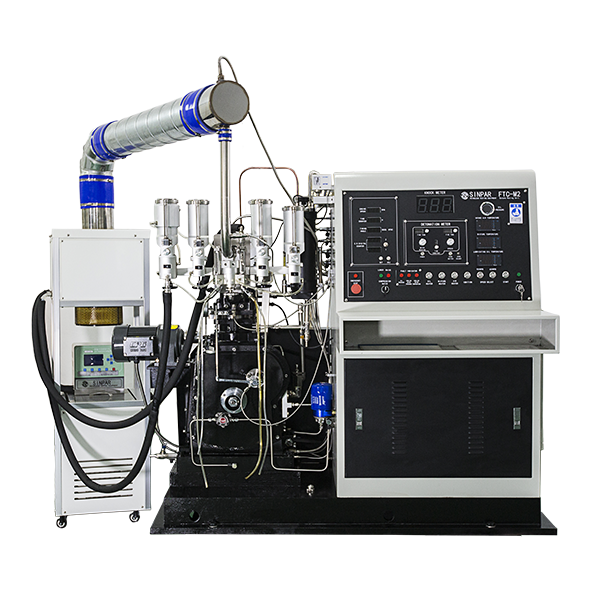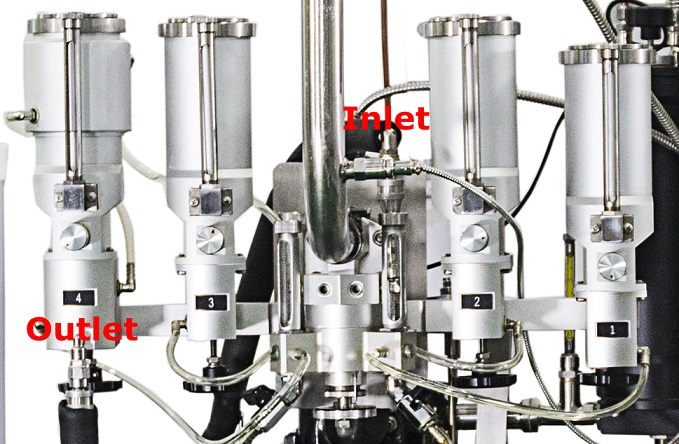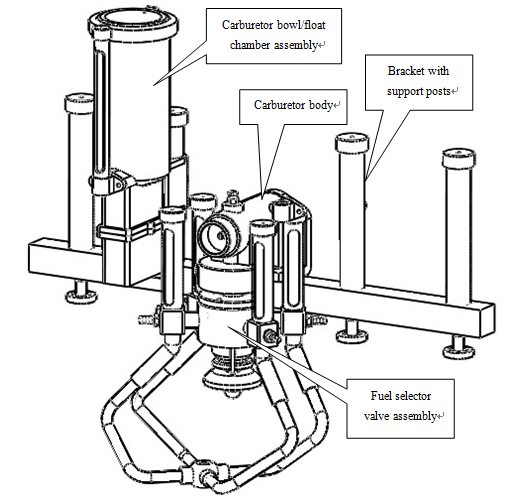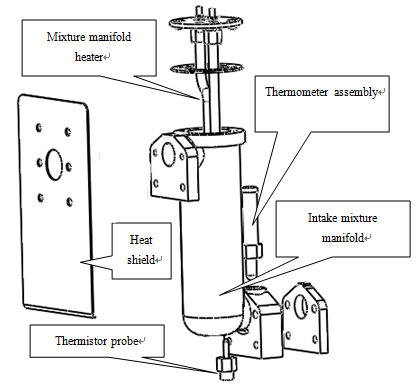Octane Test Engines fuel system consists of a carburetor assembly and an intake mixture assembly. Whether the fuel system works normally directly affects the fuel octane rating operation.
The Octane Test Engines are equipped with a carburetor assembly to handle fuel selector valve sequencing of four fuels. Typically, two fuel-bowl/float chamber assemblies are used for primary reference fuel blends and the others are used for sample fuels. Each fuel-bowl/float chamber assembly is mounted on an adjustment screw. So that the fuel level in the single vertical jet can be raised or lowered to change fuel-air ratio. Thus provide the ability to operate the octane test engines at the fuel-air ratio that produces maximum knock intensity.

Chilling of volatile fuels is achieved through the use of exchangers to cool at least one of the float chambers and the vertical jet passage. Cooling of the exchangers is accomplished by circulating a refrigerated coolant having a temperature of between 0.6℃-10℃ (33°F-50°F) through these components.

The carburetor assembly is a composite of several subassemblies that include the carburetor body to house the venturi and vertical jet, the fuel selector valve assembly with fuel level sight glasses, a bracket or bar having support posts with level adjusting screws for mounting each of the carburetor bowl/float chamber assemblies, and four individual fuel-bowl/float chamber assemblies.

The Octane Test Engines use an intake mixture manifold with electric mixture heater. The carburetor connects to the inlet flange of the manifold. And the manifold in turn is flange connected to the intake port of the engine cylinder.
The Intake Mixture Heater Manifold is used for MON test method ASTM D2700, and required to be assembled for the initial installation of the MON test method test engine.
For SINPAR FTC-M2 Octane Test Engines, the intake mixture heater manifold does not need to be disassembled when running the RON method.
